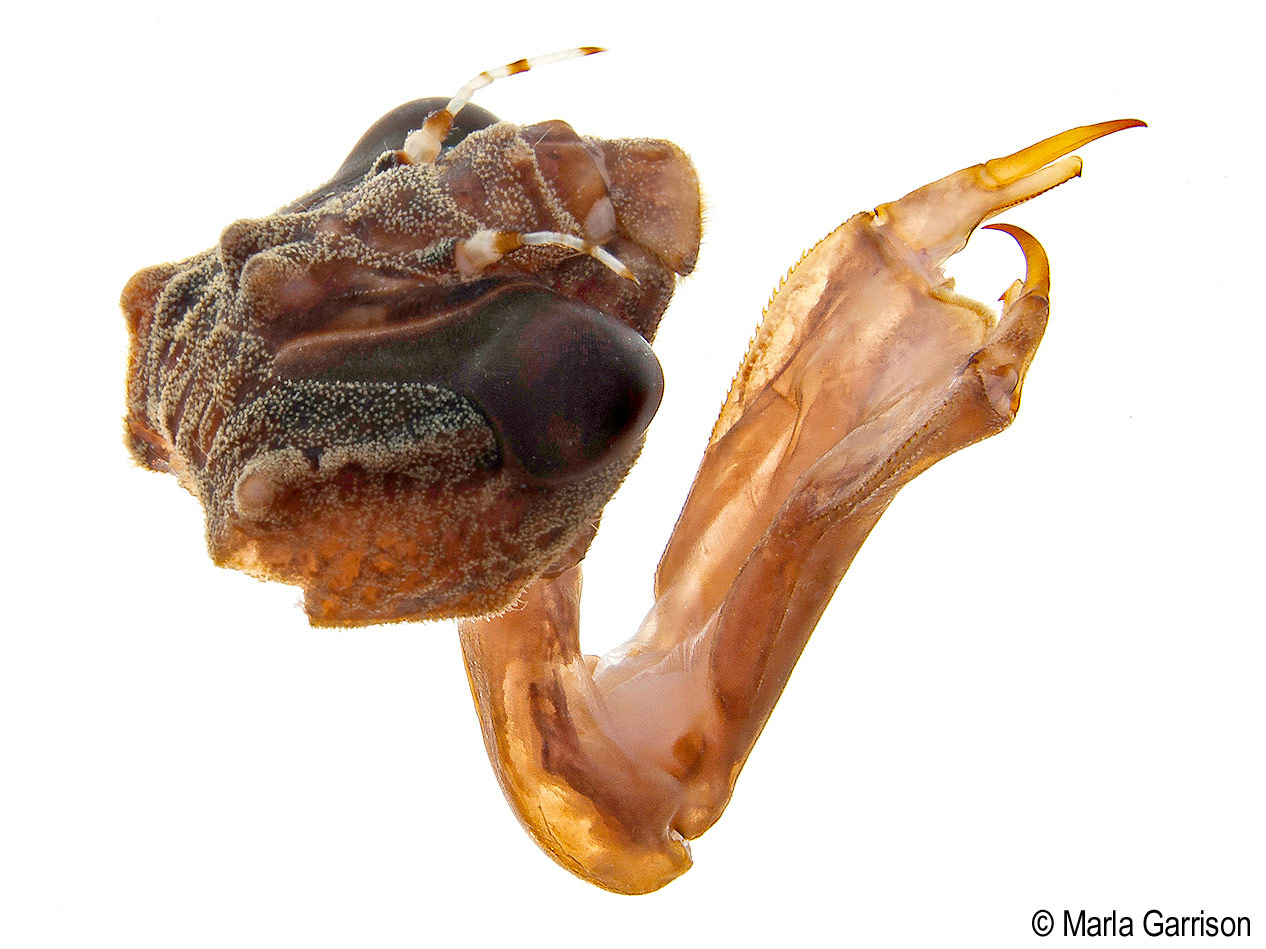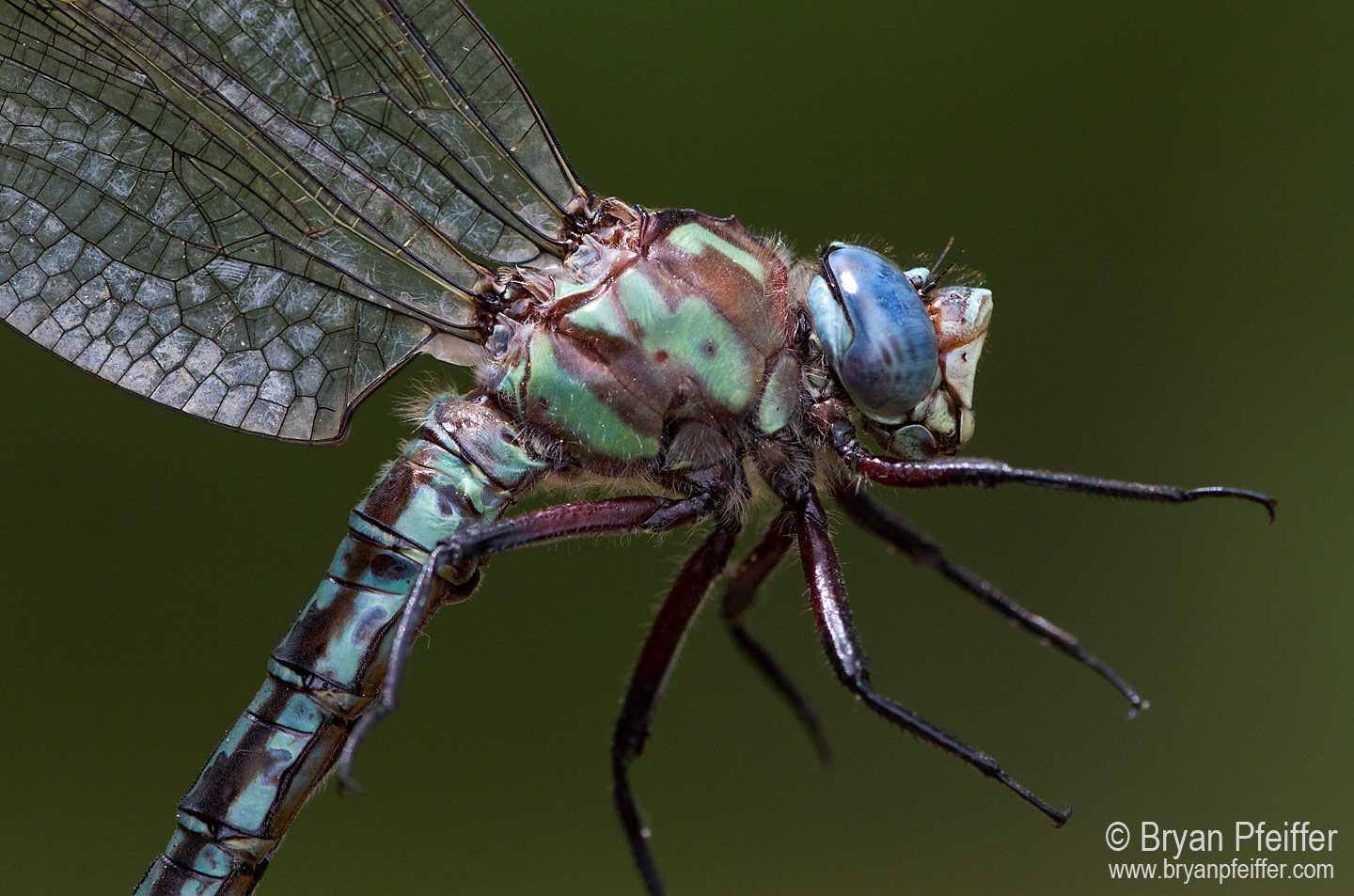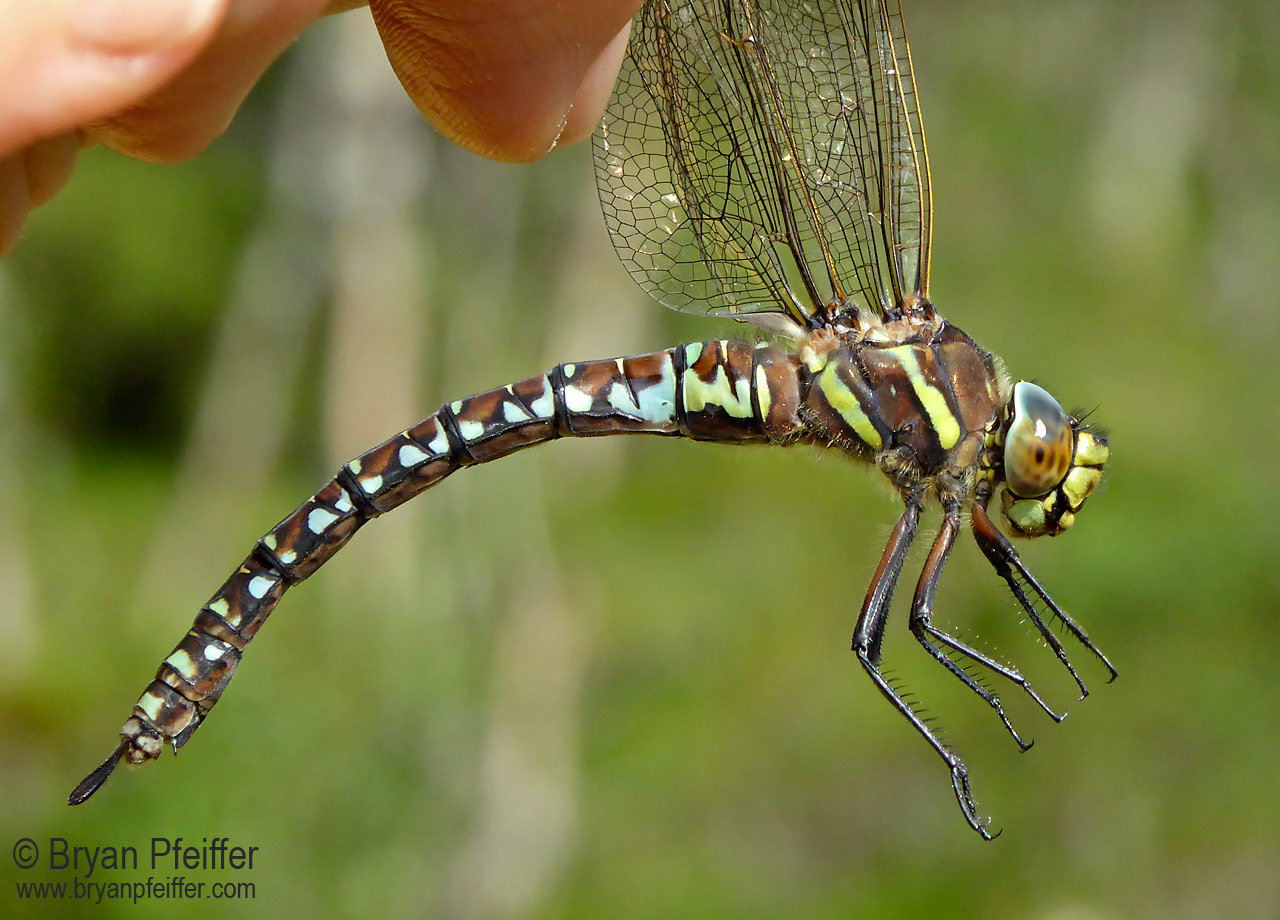What’s This? No. 27
OUR NEXT What’s This? nature challenge comes, well, it comes with no hints this time. Our last challenge — No. 26 — was a bit too easy. Name this thing (courtesy of Marla Garrison) and be eligible to win $5 off any of my outings for events this year. Enter in the comments section below. I’ll post the winner, drawn at random, and all the correct entries in a day or two. You might also want to enter in the “Creative But Incorrect” category, which has been dominated by Sara Backer. Any competitors for Sara?
 Added February 13:
Added February 13:
A drunken aunt Martha. A one-clawed crab spider. A salted caramel dinosaur drumstick. The Creative Incorrect category produced a fine slate of winners to this challenge. Selected at random from among them is Dudley Carlson (who went crabby on this). You’ll see all the crazy, wonderful answers among the comments below.
Our genuine winners are the two who actually named this beast to species: the dragonfly Cyrano Darner (Nasiaeschna pentacantha). That would be Mitchell Haag and Ron Lawrenz. Mitchell and Ron no doubt spotted the diagnostic marks for this genus: the tuberacles (bumps) on the head, particularly those two in between and above the big compound eyes.
As many of you noticed, this is the head and extendable labium of the larval form of this dragonfly — the nymph. It crawls around in streams and ponds and extends that “jaw” with lightning speed to impale and grab hapless prey, usually other aquatic insects.
The dragonfly (at least its common name) is indeed named for Cyrano de Bergerac. In the photos of hand-held adults below this next image of the full nymph (thanks again to Marla), note the sharp projection on the face (at the frons) — a bigger “nose” than your average darner, including the Sedge Darner (Aesna juncea) that I’ve shown by comparison.
As for the specific epithet, the second part of the bionomial name, pentacantha, well, I’m not entirely sure. But we know penata means five; cantha may derive from the Greek kanthos, referring to the corner of the eyes¹. So perhaps we’re talking about the five-sided (sort of) head of the nymph? Beats me. Probably not. My usual go-to source on dragonfly nomenclature, Paulson and Dunkle², suggests that pentacantha refers to five-spined, from patch of spines under adult female’s tenth abdominal segment, which can number more than five spines, however³.
All this doubt, this self-doubt about the name, is fitting for Cyrano. No matter. Roxanne would no doubt see though the nymph’s visage to find poetry and romance within this insect. Wouldn’t she? If not, she might attend NymphFest here in Vermont in March. You should join us.
The Creative and Incorrect
Why, it’s aunt Martha after she’s had a few! (Mark Council)
That is the arm of a cockatiel that has been infected by the Zika virus. The Zika virus is in the process of growing a hydrocephalic head and making plans to take to the water and become a kind of zika/cockatiel seahorse. (Erica Heilmann)
Surely part of a desiccated alien limb you found deep in that little cave in the Grand Canyon? (Patricia Fontaine)
A highly pornographic picture. (Ruth Einstein)
This is what happens when you toss a 5-day-old caramel mocha latte out the door at the North Pole. (Sara Backer)
One-clawed Crab spider waiting to pounce? Or, Owl scat containing crawfish claw? Hermit crab looking for a new home? Man, that is one wicked-looking claw. (Dudley Carlson)
Salted caramel dinosaur drumstick. (Christine Sibona)
It’s a bird hiding behind bird’s carcass. (Johannes Otter)
References
¹ A Source-Book of Biological Names and Terms by Edmund C. Jaeger.
² A Checklist of North American Odonata, Including English Name, Etymology, Type Locality, and Distribution by Dennis R. Paulson and Sidney W. Dunkle.
³ Dragonflies of North America by James G. Needham, Minter J. Westfall, Jr., and Michael L. May.





This could be the head and front leg of an insect.
Cyrano Darner
Why, it’s aunt Martha after she’s had a few! How’d you get this photo without getting stung?!
Aeshnidae nymph head
Head of a dragonfly nymph.
Looks like larval odonate mouthparts to me
Is this the ejecting lip (labium) of a dragonfly nymph? 🙂
Bur probably not…that’s a head and the foreleg of some predatory insect…
mandible of an odonate?
That is the arm of a cockatiel that has been infected by the Zika virus. The Zika virus is in the process of growing a hydrocephalic head and making plans to take to the water and become a kind of zika/cockatiel seahorse.
Surely part of a dessicated alien limb you found deep in that little cave in the Grand Canyon?
This is the head of a dragonfly nymph showing the lower mouthpart or labium that makes it such an effective predator. Would you believe that I remembered the terms labrum and labium from working with dragonflies 51 years ago! So why are you pulling their heads off?
A highly pornographic picture!!!
In my haste I neglected to specify nymph.
This is what happens when you toss a 5-day-old caramel mocha latte out the door at the North Pole.
Dragonfly larvae head and mouth parts.
One-clawed Crab spider waiting to pounce? Or, Owl scat containing crawfish claw?? Hermit crab looking for a new home? Man, that is one wicked-looking claw.
It’s the head of a dragonfly nymph/larva, more specifically Nasiaeschna pentacantha a.k.a the Cyrano Darner. Note the four protuberances on top of the head, two close together centered right behind the eyes and two far apart on either side of the rear margin of the head. Cool bug!
Salted caramel dinosaur drumstick
Well, it looks like the head of a dragonfly with some sort of nasty looking appendage/leg attached.
I’ll stick with birds 😉
Patti
It’s a bird hiding behind birds carcass
severed head and lower “lip” of an odonate; do you want the species?